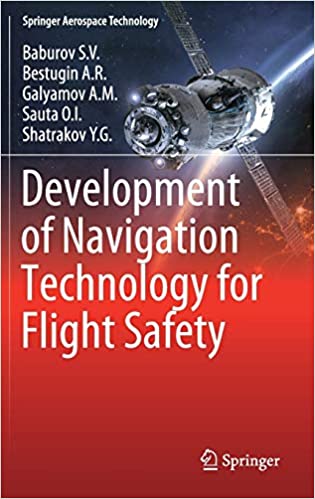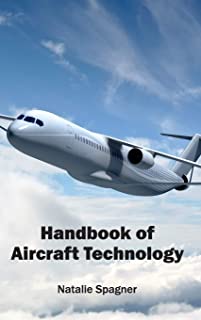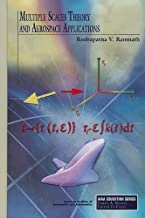Development of Navigation Technology for Flight Safety
Original price was: ₹10,174.08.₹8,139.26Current price is: ₹8,139.26.
ISBN: 9789811383748
Author/Editor: S V Baburov
Publisher: Springer
Year: 2020
1 in stock (can be backordered)
Description
This book highlights practical solutions for flight safety improvement techniques, which are currently the focus of the International Civil Aviation Organization (ICAO). It has become clear that, in order to rapidly and significantly improve flight safety, the integrated use of new aeronautical technologies is called for. Considering the size of the aviation fleet, its constant growth and the long service lives of aircraft, new technologies should be adapted both to cutting-edge air navigation systems and to those that have been used for over a decade.
Concretely, the book discusses methodological approaches to the construction of ground and on-board avionics that make it possible to achieve improved flight safety using innovative new methods. The proposed approaches are illustrated with real-world examples of e.g. satellite-based navigation systems and enhanced ground proximity warning systems.
The book is written for professionals involved in the development of avionics systems, as well as students, researchers and experts in the field of radiolocation, radio navigation and air traffic control, the book will support the development and modeling of radio technical complexes, as well as the analysis of complex radio technical systems.
Product Properties
| Year of Publication | 2020 |
|---|---|
| Table of Contents | GENERAL DESCRIPTION OF FLIGHT SAFETY PROBLEMS Analysis of the state and prospects for the development of instrument landing systems and collision avoidance systems Features of global navigation satellite systems as an instrument basis for improving flight safety Augmentations - the main method to improve the performance characteristics of global navigation satellite systems Analysis of requirements for satellite-based landing systems and collision avoidance systems General methods and techniques to improve flight efficiency and safety when using satellite-based landing systems and collision avoidance systems Flight safety indicators Conclusions to Chapter 1 METHODOLOGY FOR CONSTRUCTING SATELLITE-BASED LANDING SYSTEMS AND COLLISION AVOIDANCE SYSTEMS Theoretical background of a formalized methodological approach to the selection of basic elements for radio-electronic complexes to improve flight efficiency and safety Methods for building the structure of the ground and onboard radio-electronic complexes of satellite-based landing systems with augmentations of global navigation satellite systems Methods and rules for the development of a collision avoidance system with the use of global navigation satellite system technologies Directions and methods to enhance satellite-based landing systems and collision avoidance systems Conclusions to Chapter 2 METHODS FOR IMPROVING FLIGHT EFFICIENCY AND SAFETY FOR SATELLITE-BASED LANDING SYSTEMS Method for increasing the accuracy and integrity of the guidance signals based on the construction and use of volumetric distribution diagrams for radio waves multipath errors and the system structure for its implementation Method for ensuring integrity and continuity of guidance signals based on the use of an integrated signal-to-noise ratio for pseudoranges in presence of radiointerference Method for increasing accuracy and integrity of guidance signals based on pseudorange error compensation using phase measurements and the structure of the radioelectronic complex for its implementation Method for increasing accuracy, integrity, continuity and availability of guidance signals based on the use of pseudo-satellite signals and the system structure for its implementation Conclusions to Chapter 3 METHODS FOR IMPROVING FLIGHT EFFICIENCY AND SAFETY BASED ON TECHNOLOGIES APPLICABLE IN COLLISION AVOIDANCE SYSTEMS Method for improving flight safety by generating a warning about a potential collision based on the three-dimensional synthesis of the underlying surface sections and the display of hazardous elements Method for increasing the flight effectiveness and safety by assessing the possibility of vertical maneuvering and determining the direction of the turn Method for increasing the flight effectiveness and safety by identifying hazardous terrain, taking into account the possibility of a reverse turn, and the system structure for its implementation Method for improving flight efficiency and safety by analyzing the space inside a corridor safe for flight Conclusions to Chapter 4 INTEGRATED TECHNICAL SOLUTIONS ON THE JOINT USE OF TECHNOLOGIES APPLICABLE IN COLLISION AVOIDANCE SYSTEMS AND SATELLITE-BASED LANDING SYSTEMS Principles of constructing an integrated flight safety enhancement system based on the collision avoidance system and the satellite-based landing system Method for preventing aircraft landings on an unauthorized runway by calculating a virtual glide path Method for notifying of the aircraft or UAV position during the landing and roll-on operation Assessment of flight safety and efficiency improvements with the use of integrated systems Conclusions to Chapter 5 RECOMMENDATIONS FOR THE APPLICATION OF THE PROPOSED TECHNICAL SOLUTIONS IN THE SATELLITE-BASED LANDING SYSTEMS AND COLLISION AVOIDANCE SYSTEMS Principles of construction and design features of onboard equipment to improve flight efficiency and safety Construction of an onboard navigation and landing complex on the basis of the satellite-based landing system and the collision avoidance system Results of the satellite-based landing system flight tests Results of the Enhanced Ground Proximity Warning System flight tests and operation Conclusions to Chapter 6 CONCLUSIONs REFERENCES |
| Author | S V Baburov |
| ISBN/ISSN | 9789811383748 |
| Binding | Hardback |
| Edition | 1 |
| Publisher | Springer |
You must be logged in to post a review.






Reviews
There are no reviews yet.